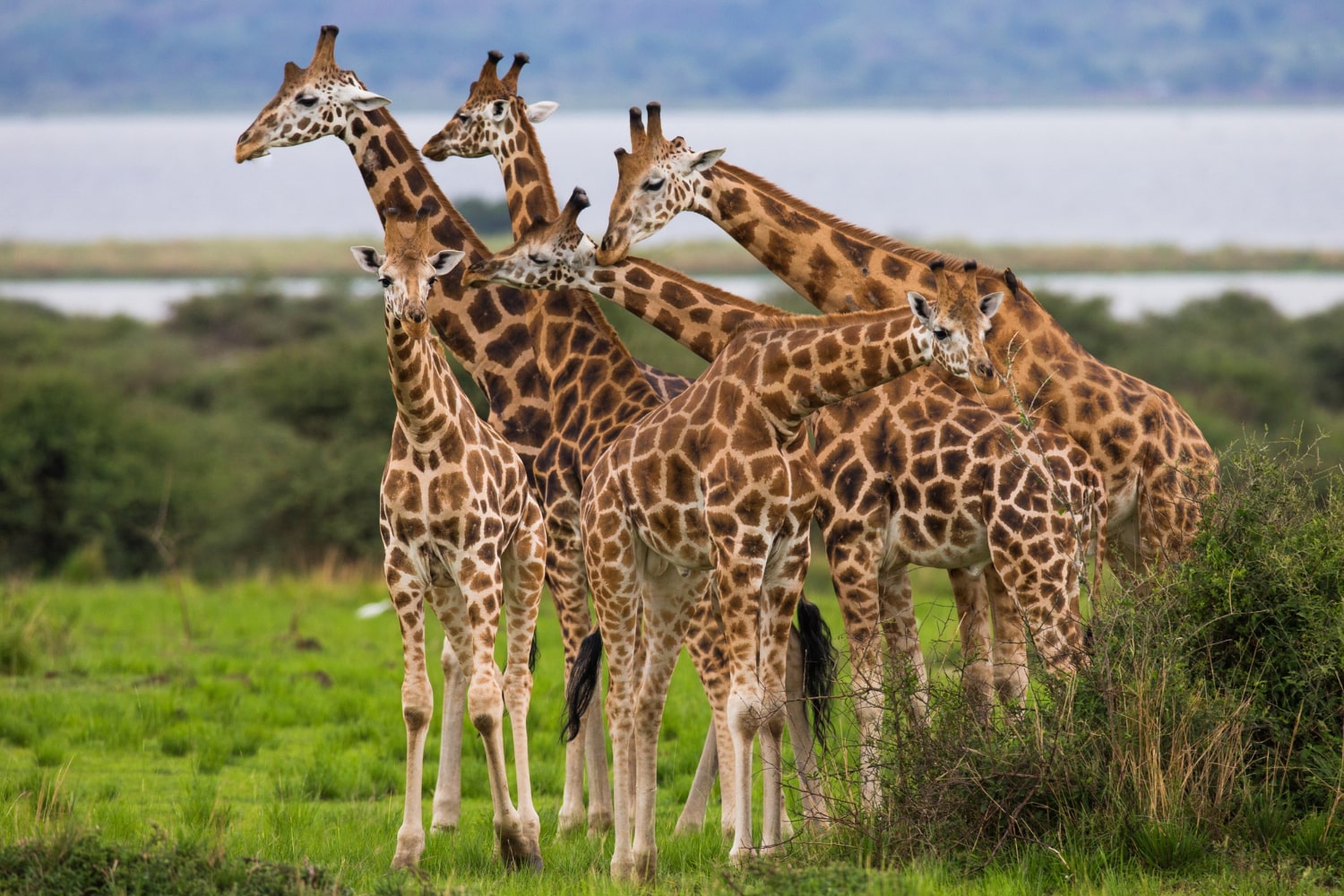The giraffe is one of the most recognizable and fascinating animals in the world. Its exceptionally long neck, graceful walk, and calm temperament capture the attention of both children and adults. Giraffes are a symbol of the African savannah and represent a unique blend of strength, elegance, and extraordinary anatomy. In this article, you will discover interesting facts about giraffes that you may not have known, but which will certainly enrich your understanding of these majestic creatures.
- The giraffe is the tallest land animal on Earth. An adult male can reach a height of over 5.5 meters, while a female can grow up to 4.5 meters. Most of this height comes from the neck, which consists of only seven cervical vertebrae — the same number as in humans.
- Despite its length, the giraffe’s neck is not flexible enough to allow it to lower its head to drink water directly. To drink, it must spread its front legs wide and bend down its entire body. This makes drinking one of the most vulnerable moments in a giraffe’s life, especially due to predators.
- The giraffe’s tongue can reach 45 to 50 centimeters in length. It allows the animal to skillfully grasp leaves from tall trees, particularly acacias, even with sharp thorns. The tongue is dark purple or bluish, which protects it from sunburn.
- Each giraffe has a unique spot pattern on its body that does not repeat — similar to human fingerprints. These patterns can be used to identify individual animals. The spots also help with thermoregulation, as a network of blood vessels runs beneath them.
- A giraffe’s heart is extremely strong and weighs around 11 kilograms. It must pump blood up to the brain at a height of over two meters, requiring high blood pressure. Special valves prevent damage to blood vessels due to this pressure.
- Giraffes are usually quiet, but that does not mean they are silent. They can produce low-frequency sounds, or infrasound, that are inaudible to the human ear. These sounds are used to communicate over long distances.
- Pregnancy in giraffes lasts about 15 months. A newborn calf is about two meters tall and stands on its feet almost immediately after birth. Calves are born while the mother is standing, so they fall from a height of more than 1.5 meters, which helps activate their systems.
- Male giraffes engage in ritualized fights for dominance using their necks as weapons. They swing their heads and necks to strike each other in contests that can last from minutes to hours. These battles rarely cause serious injury but establish social hierarchy.
- Giraffes live in groups, but their social structure is flexible. The composition of herds changes frequently, and individuals often move between groups. Most herds consist of females with young or young males.
- Giraffes have excellent vision, which helps them spot predators from a great distance. Their height makes them a kind of early warning system for other animals in the savannah. Their presence reduces the likelihood of predator attacks.
- Giraffe legs end in large, strong hooves that serve both for walking and defense. If threatened, a giraffe can deliver a powerful kick that can kill a lion. However, such kicks are used only as a last resort.
- Giraffes sleep very little — on average only 4 to 5 hours per day, often standing. Deep sleep lasts just a few minutes and usually occurs at night. This limited sleep helps them stay alert to danger.
- Scientists now recognize four different species of giraffes, though they were once thought to be a single species with subspecies. These species differ genetically and inhabit different regions of Africa. All are threatened by habitat loss and human activity.
- In ancient Egypt, giraffes were depicted in art and considered sacred animals. Some pharaohs kept them in royal menageries. Giraffes did not appear in Europe until the Middle Ages, where they were seen as exotic curiosities.
- Giraffes do not need to drink water every day because they get enough moisture from leaves. Especially during the rainy season, they can go several days without drinking. This adaptation helps them survive in arid savannah climates.
- When running, a giraffe can reach speeds up to 60 kilometers per hour. It moves both left legs or both right legs at the same time, creating a characteristic swaying gait. Though it looks slow, this movement is highly efficient.
- Giraffes groom each other by licking ears, necks, and faces of fellow group members. This behavior is not only hygienic but also strengthens social bonds within the herd. It helps reduce stress and promotes group cohesion.
- The oldest giraffe in captivity lived over 30 years. In the wild, their average lifespan is about 20 to 25 years. Their main threats include predators, disease, and human encroachment.
Giraffes are truly a marvel of nature, combining grace, strength, and remarkable adaptations for life in the African savannah. Their anatomy, behavior, and social structure continue to fascinate scientists and wildlife enthusiasts around the world. These incredible facts about giraffes reveal just how much mystery and wonder can lie in a single species. You may not have known how unique and important these tall, quiet animals really are — but now you do.





